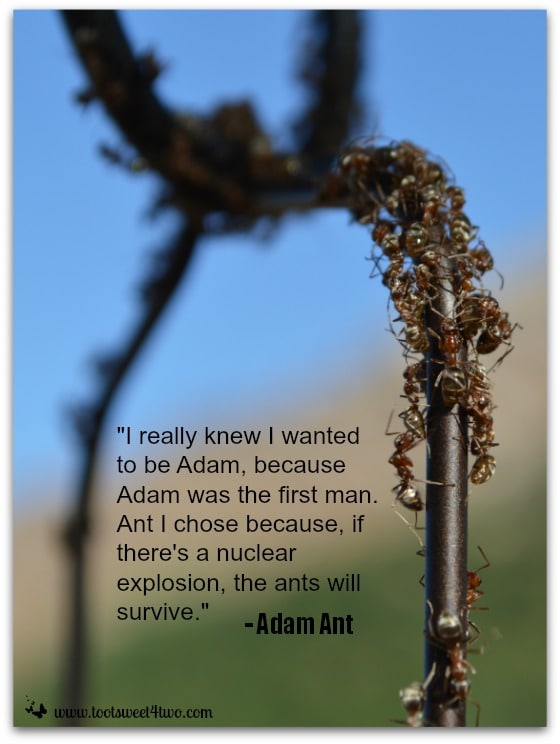
“I really knew I wanted to be Adam, because Adam was the first man. Ant I chose because, if there’s a nuclear explosion, the ants will survive.”
– Adam Ant
Are you a bit curious about the photo above? Here’s the story:
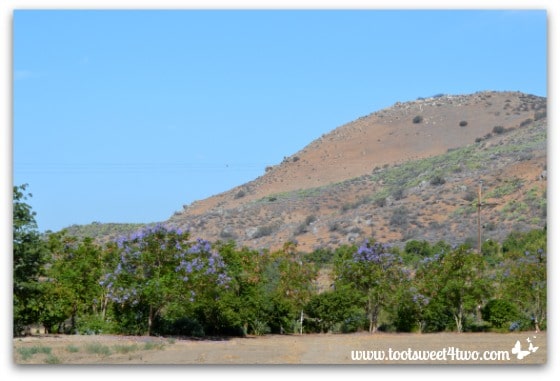
We live in a rural environment on 8 acres. 8 acres of mostly dirt. Many years ago, we leased our land to a tenant farmer, so for years and years, we had watermelon, corn and cantaloupe growing in our fields. A beautiful, pastoral sight to behold indeed.
Then, our old country home (99-years-old) – old by California standards, burned to the ground in a wildfire in 2007 (see Any Way the Wind Blows). Fortunately, we were well insured and after 13 months, were able to move back home to our brand new house.
However, we had difficulty obtaining homeowners insurance (at a somewhat reasonable cost) because of the fire and where we live. The one carrier willing to write our insurance policy insisted that no farming activity take place on our land. So, we had to let the tenant farmer go and our land return to barren fields of dirt {sad face}.
We have a very long driveway that leads to the main access to our property from the road. My husband, Charlie, asked me what I wanted to do with this very long driveway. I told him I wanted Jacaranda trees. So, sweet Charlie made it happen and we have 30+ Jacaranda trees lining our driveway! They bloom in June and start to fade in July, but during this short blooming cycle, they are a wondrous sight.
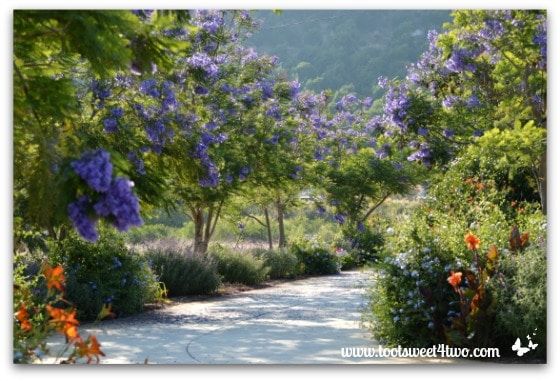
I love walking along our long driveway and enjoying their beauty.
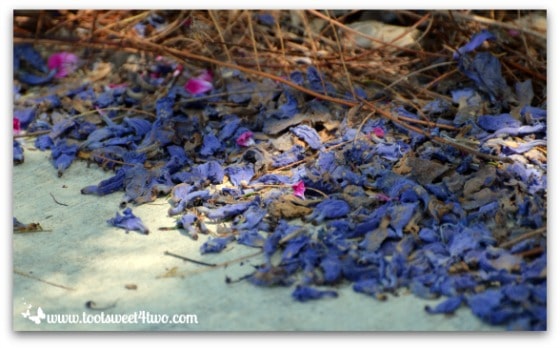
Swaying in the wind, strewn blossoms lining the pathway, the Jacaranda tree branches drip with blossoms.
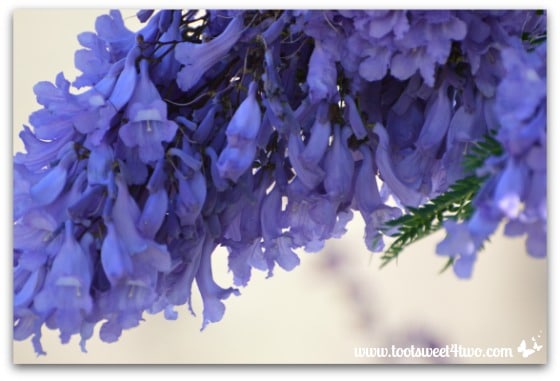
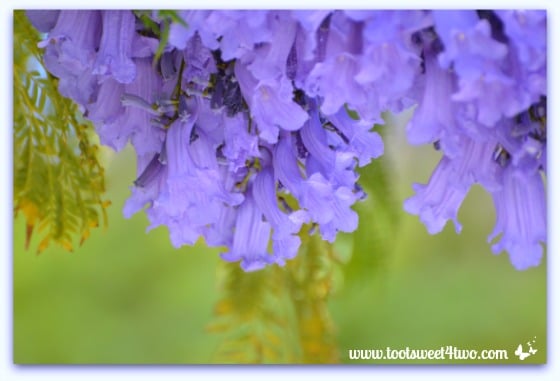
I even love the Jacaranda trees’ woody seed pods…
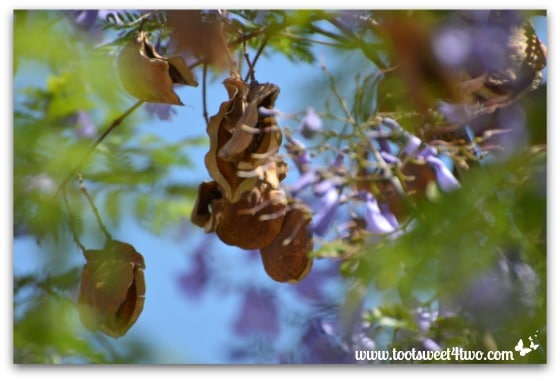
We’ve hung birdhouses and bird feeders in our Jacaranda trees to keep the birds coming back. Here’s a photo of one of my favorite birdhouses:
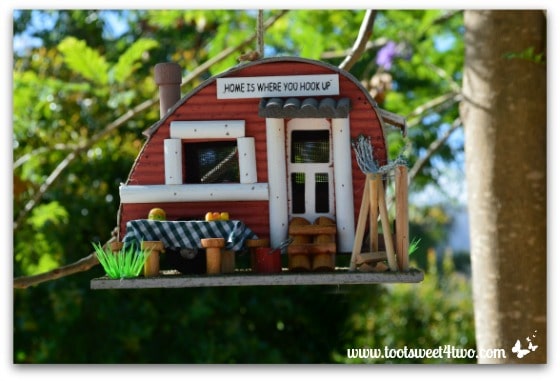
So cute – don’t you think?
Anyway, I stroll up and down our driveway often just to check things out and make sure the birds are happy, the flowers are blooming and just because it’s beautiful and brings me joy!
The other day, while strolling the driveway, I noticed this hummingbird feeder:
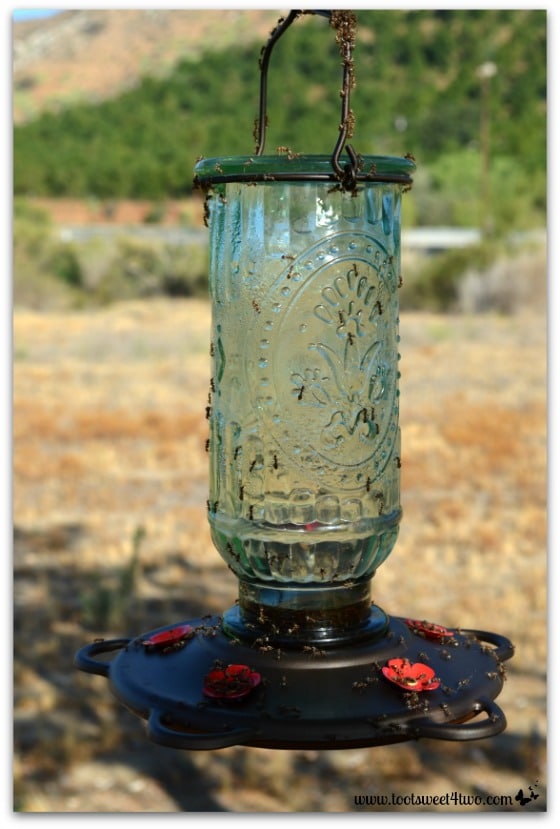
Man, oh man, what were those crazy ants doing all over the hummingbird feeder? Where were they coming from? So I walked closer…
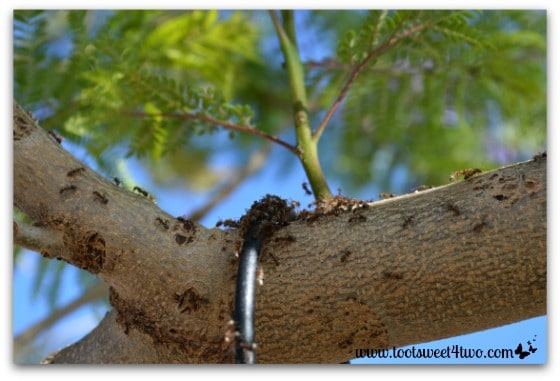
They were climbing up the Jacaranda tree’s trunk, over to the tree limb that had the hummingbird feeder hanging from it…
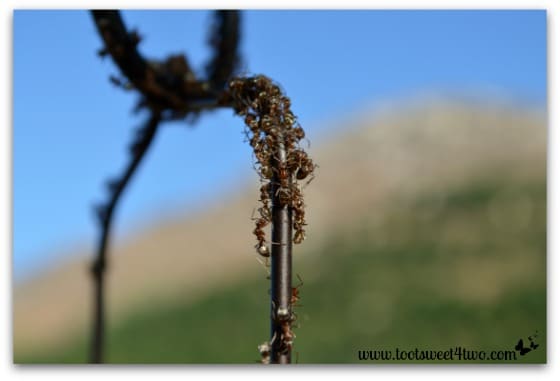
Then down the hummingbird feeder’s hangers…
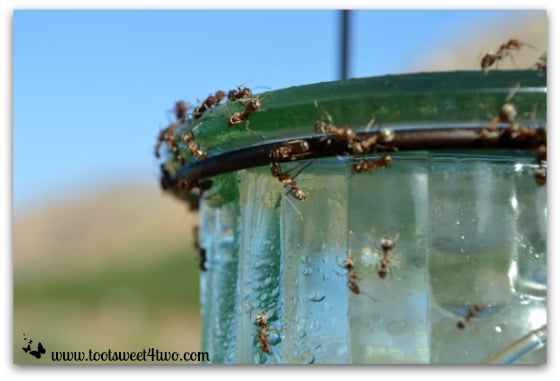
Over the glass jar of the hummingbird feeder they marched with purpose…
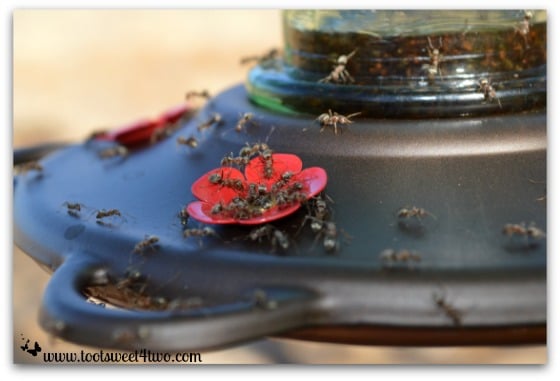
The ants went marching one-by-one (hurray, hurray) into the red metal flower feeder, into the sweet nectar made for the hummingbirds…
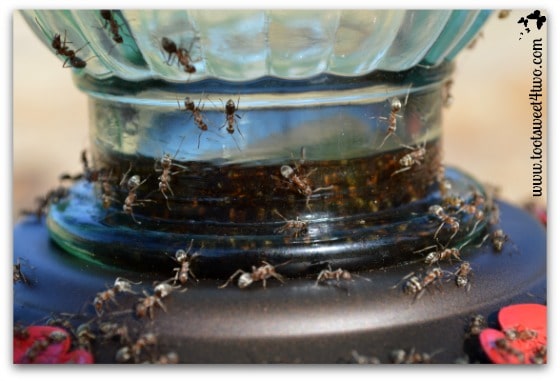
To their death!
Yes, the ants were drowning themselves in the hummingbird nectar!
I left them alone (I’m not crazy – I’m not going to touch something swarming with stinging red ants!) for a few days, checking the status everyday, until the nectar was gone, and no more ants were climbing up the trunk, over the branch, down the hanger, onto the feeder and inside the feeder.
Then, I took the hummingbird feeder down and into the kitchen to clean it. I unscrewed the feeder and emptied it…
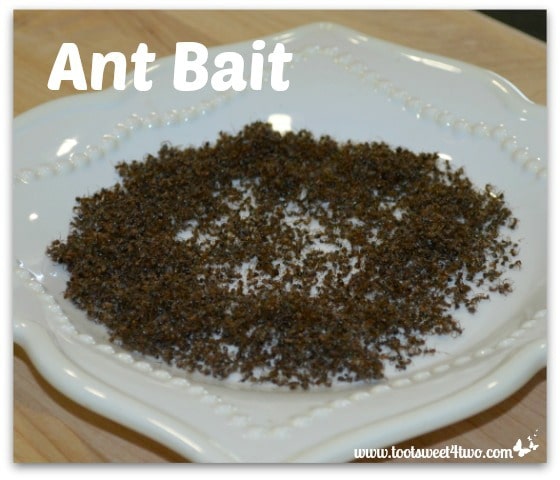
Hundreds of dead ants on a salad plate…I thought briefly (just briefly) about looking for a chocolate-covered ant recipe online and trying it out. But, I shut that idea down promptly because I’m really not that brave {grin}!
But, if you are (brave enough, that is, and have 400+ extra hours of free time), here’s a recipe over at Food.com – Chocolate Covered Ants – check it out; it’s pretty funny!
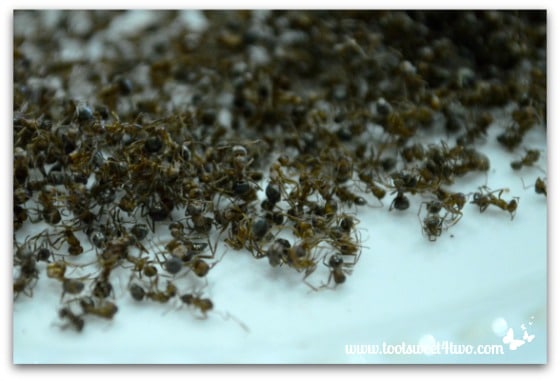
Personally, I don’t think they look all that appetizing even if they were dripping in chocolate {grin}!
Maybe ants will survive a nuclear explosion, but they don’t survive sugar-water encased in a hummingbird feeder!
So, here’s my recipe for “ant bait” in a hummingbird feeder:
- 1 cup granulated sugar
- 4 cups water
- Place sugar and water in a sauce pan and bring to a boil.
- Boil for a few minutes to kill any mold or bacteria.
- Cool completely and fill hummingbird feeder.
- Store leftovers in the refrigerator.
- Do not use any dye.
- Recipe Source: [url href=”http://nationalzoo.si.edu/scbi/migratorybirds/webcam/hummingbird_nectar_recipe.cfm” target=”_blank” title=”Hummingbird Nectar Recipe”]Smithsonian Migratory Bird Center[/url]
Or, you could just use this recipe to feed the hummingbirds!
Tootles,

Related Posts:
(other posts about birds and nature)
Leave a Reply